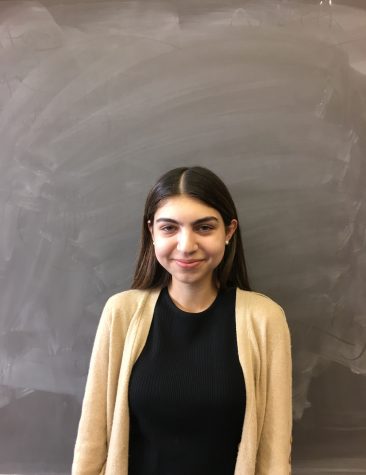The 40-Year Evolution of FWP
Through the Eyes of Bonnie Seebold, Dan Frank, and Pat McHale
Imagine Parker’s entrance without the security desk, the sign-in sheets, the ID scanners, and the flatscreen. The first thing you see on your right is not a wall that mirrors your reflection, but rather a cozy fireplace. No doors bar your way.
This was Parker’s entrance when Upper School English teacher Bonnie Seebold, Principal Dan Frank, and P.E. teacher Pat McHale first saw Parker.
Seebold started teaching at Parker in 1977. Over her 39-year Parker career, the biggest academic adjustment came when the duration of courses switched from trimester-long or “intensives” to semester-long classes.
Trimester-long courses would meet for two hours and 20 minutes, two days a week and then for an hour on the third day. “It was good for learning by doing because you had a lot of time to do that,” Seebold said. “So I was sad when it went away because I thought we had something pretty unique and interesting for maybe the first 10 years I was here, but our schedule has been here for a long time.”
Once the curriculum became semester-based, Seebold’s course load was increased. Upper School teachers taught three courses in the first semester and four courses in the next, according to Seebold.
“And then the load was increased to four classes per semester,” Seebold said, “and that was sad because obviously the heavier your load, the less time you have to meet individually with students, the less time you have to prepare.”
Parker has made significant progress, according to Seebold, by including more female writers and writers of color than the number offered when she first arrived at Parker. Seebold said, “A lot of people still think we haven’t done enough.”
Her teaching style over time has also been affected by her age. Interactions with her students were more frequent when she was a younger teacher, according to Seebold. “I’m half a century older than my seniors,” Seebold said. “When I said that to the freshmen they were surprised. I think I act silly sometimes, so they don’t realize that I’m as old as I am, but, you know, that changes things.”
Still, Seebold identifies the latter half of her career as the time to make the most impact on her students in the classroom.
“Kids are focused on the material that we are reading, and they’re trying to understand new ideas and open their minds to the world,” Seebold said. “And that’s frankly all I care about. I mean my goals in teaching are simple. To inspire people to read widely and to help them express themselves more clearly. It’s that simple, but it’s not easy.”
Principal Dan Frank, who graduated from Parker in 1974, believes that it is important to uphold the Parker’s philosophy of teaching that Seebold embodies. Parker strives to better support diversity, equity, and inclusion through the admissions process and curriculum development, according to Frank.
One of the biggest changes Frank has seen over his Parker career is the widening breadth of course selection. “When I was in high school here,” Frank said, “Parker had an exciting range of classes and electives, but we have since added, for example, Mandarin Chinese, robotics, an expanded math curriculum, Spanish through grades JK to 6, and more.”
The addition of more courses stems from the greater ability of Parker’s administration to meet the needs of teachers, parents, and a growing student body, according to Frank. He says that the Parker student body was under 700 students 40 years ago and is now over 900.
Frank remembers a more middle class neighborhood demographic that affected the makeup of the student body 40 years ago than the one present today. Frank said, “Who knows what changes will take place in Chicago 40 years from now.”
P.E. teacher Pat McHale imagines that in 40 years, the building will expand in size to support the size of the student body. He has observed the changes other private schools have made to meet this problem, such as the Chicago-based Montessori school that is building a branch in China to enroll students who live outside of the United States.
While Parker has not gone international, McHale has witnessed the structural growth of Parker’s Chicago location.
“The physical building has been totally transformed since I first experienced Parker as a parent taking my children to school thirty-five years ago,” McHale said. “The building is twice the size with the addition of a new Middle School and High School floors, followed by expansion of the auditorium, redesign of the courtyard, and the addition of the turf field.”
With the new perks in the fitness room and the turf field, McHale and the rest of the P.E. department have benefitted from the facilities that have been added to Parker’s infrastructure over the past 40 years. The P.E. program itself has improved along the way, according to McHale.
“Having athletes excused from classes has had a significant impact on H.S. classes,” McHale said. “Often there are too few students to have an effective class, especially in team sports. That is the negative impact on the program. The Lower School, Intermediate School and Middle School programs remain strong and they seem to be meeting the needs of the students.”
As Parker continues to change, the one characteristic of Parker that Seebold, Frank, and McHale agree has stayed the same is the school’s commitment to educating its student body collaboratively and enthusiastically.







